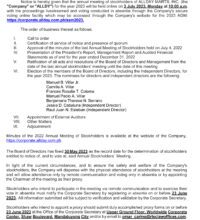Rates of T-bills, bonds may end mixed

RATES of Treasury bills (T-bills) on offer this week could be steady, while the new five-year bonds could fetch yields at par with secondary market levels, amid bets on the US Federal Reserve’s next policy move.
The Bureau of the Treasury (BTr) will auction off P15 billion in T-bills on Monday, or P5 billion each in 91-, 182-, and 364-day papers.
On Tuesday, the government will offer P30 billion in fresh five-year Treasury bonds (T-bonds).
T-bill rates could be mixed and little changed this week, mostly tracking secondary market yields, Rizal Commercial Banking Corp. Chief Economist Michael L. Ricafort said in a Viber message.
The five-year bonds could also fetch rates close to secondary market levels, Mr. Ricafort added.
Secondary market yield movements were mostly mixed as investors were betting on the Fed’s next monetary policy decision, he said.
“Despite neutral auction results, players were generally biddish until strong US jobs data ruined the buying mood as it sparked doubts on how soon the Fed can start lowering rates,” a trader likewise said in an e-mail on Friday.
The trader sees the five-year bond fetching rates from 6% to 6.125%.
At the secondary market on Friday, the rates of the 91-, 182-, and 364-day Treasury bills (T-bills) dropped by 1.73 basis points (bp), 0.94 bp, and 4 bps week on week to 5.2265%, 5.5084%, and 5.8274%, respectively, based on PHP Bloomberg Valuation Service Reference Rates data published on the Philippine Dealing System’s website.
Meanwhile, the five-year bond rose by 8.02 bps week on week to yield 6.0188%.
The monthly nonfarm payrolls report showed the US economy added 216,000 new jobs in December, Reuters reported.
The jobless rate held steady at 3.7%, down from most forecasters’ expectations for it to rise, prompting concerns that the Fed’s long battle to tame inflation may have further to run.
Futures traders on Friday saw a 66.4% chance of the Fed in March starting to lower its benchmark overnight interest rate from the current 5.25% to 5.5% range, according to the CME Group’s FedWatch Tool.
The US central bank last month kept the fed funds rate steady at 5.25-5.5% for a third straight meeting after hiking borrowing costs by a cumulative 525 bps from March 2022 to July 2023.
The Federal Open Market Committee will hold its first policy meeting for the year on Jan. 25-26.
Meanwhile, Philippine inflation data released on Friday also affected secondary market yields, Mr. Ricafort added.
Inflation slowed to 3.9% in December from 4.1% in November and 8.1% in the same month a year ago. This was the first time the consumer price index (CPI) settled within the central bank’s 2-4% target and was the slowest since the 3% reading in February 2022.
However, headline inflation averaged 6% for 2023, faster than 5.8% in 2022 and marking second straight year that the CPI exceeded the Bangko Sentral ng Pilipinas’ 2-4% annual goal.
Last week, the BTr raised P17 billion from its offer T-bills, above the initial P15-billion program, as total bids reached P39.945 billion or more than twice the amount on the auction block.
Broken down, the Treasury made a full P5-billion award of the 91-day T-bills as tenders for the tenor reached P13.36 billion. The average rate of the three-month paper rose by 14.4 bps to 5.14%. Accepted rates ranged from 5.4% to 5.88%.
The BTr likewise borrowed P5 billion as planned via the 364-day debt papers as bids for the tenor reached P12.225 billion. The average rate of the one-year T-bill went up by 9.7 bps to 5.829% from 5.732% previously, with accepted rates from 5.498% to 6.7%.
Meanwhile, the government raised P7 billion through the 182-day securities, above the original P5-billion program, as bids for the paper reached P14.36 billion. The average rate for the six-month T-bill stood at 5.578%, jumping by 31.1 bps from the previous auction, with accepted yields ranging from 5.328% to 5.85%.
The Treasury bureau wants to raise P195 billion from the domestic market this month, or P75 billion via T-bills and P120 billion through T-bond offerings.
The government borrows from local and foreign sources to help fund its budget deficit, which is capped at 5.1% of gross domestic product this year. — A.M.C. Sy with Reuters




